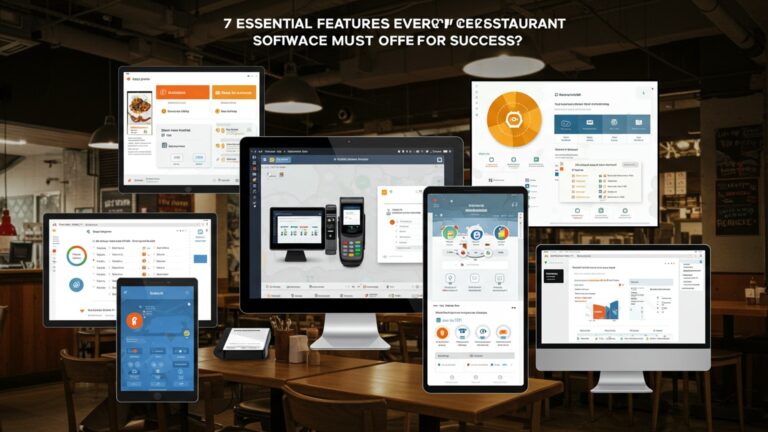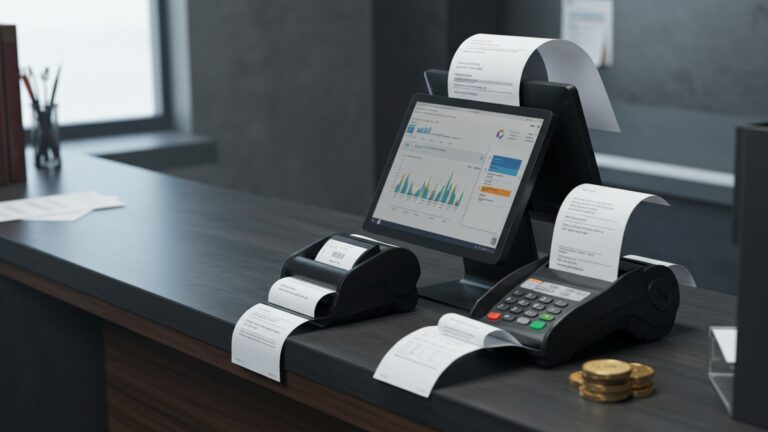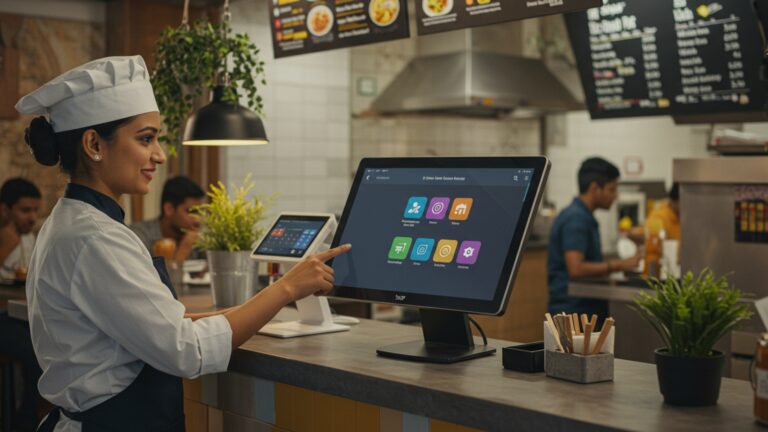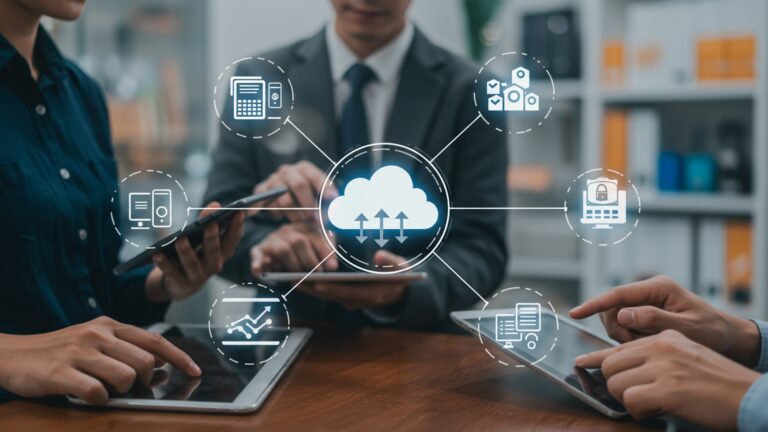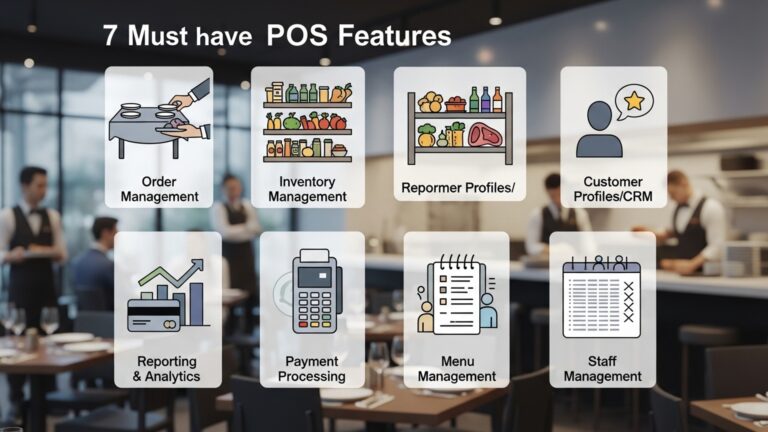Elevate Your Restaurant How to Choose the Right POS Software for Success
In today’s hyper-competitive dining landscape, a restaurant’s operational efficiency dictates its very survival and growth. Gone are the days when a simple cash register sufficed; modern establishments demand a robust central nervous system to manage everything from contactless orders to real-time inventory analytics. Choosing the right restaurant pos software has become a strategic imperative, transforming raw transaction data into actionable insights for menu optimization, staff scheduling. cultivating customer loyalty programs. Forward-thinking restaurateurs leverage cloud-based platforms that integrate seamlessly with third-party delivery services and offer mobile capabilities, ensuring peak performance and an elevated guest experience in an era defined by digital convenience and data-driven decisions.
Understanding the Core: What is Restaurant POS Software?
At its heart, Point of Sale (POS) software is the central nervous system of any modern restaurant operation. Far more than just a glorified cash register, today’s restaurant pos software is an integrated system designed to streamline every aspect of your business, from taking orders and processing payments to managing inventory, staff. customer relationships. It’s the technology that empowers you to run your establishment more efficiently, make data-driven decisions. ultimately, enhance the guest experience.
Historically, POS systems were bulky, on-premise setups requiring significant upfront investment and IT expertise. But, the landscape has dramatically evolved. Cloud-based solutions have democratized access to powerful tools, making sophisticated management accessible to even small cafes and food trucks.
- Order Management: Facilitates quick and accurate order taking, sends orders directly to the kitchen display system (KDS) or printers. manages modifications or special requests.
- Payment Processing: Handles various payment methods including credit/debit cards, mobile payments, gift cards. split checks.
- Inventory Management: Tracks ingredients and supplies in real-time, helps manage stock levels, reduces waste. automates reordering.
- Customer Relationship Management (CRM): Builds customer profiles, manages loyalty programs. supports targeted marketing efforts.
- Employee Management: Tracks employee hours, manages shifts, calculates payroll. monitors performance.
- Reporting and Analytics: Provides comprehensive insights into sales trends, peak hours, popular menu items, labor costs. more, enabling informed strategic decisions.
Why the Right Restaurant POS Software is Non-Negotiable for Success
In today’s competitive culinary world, merely serving great food isn’t enough. Operational efficiency, cost control. an exceptional customer experience are paramount. This is where the right restaurant pos software becomes an indispensable asset, not just a luxury. It acts as a powerful tool that transforms challenges into opportunities for growth and profitability.
Consider a bustling Friday night. Without an efficient POS, order errors pile up, payment processing lags. staff are overwhelmed. With a robust system, orders flow seamlessly, payments are swift. staff can focus on guest interaction. This translates directly to higher table turnover, increased customer satisfaction. improved staff morale.
Case Study: The Local Bistro’s Transformation
“The Daily Grind,” a popular neighborhood bistro, struggled with manual inventory tracking, leading to frequent stockouts of popular items and significant food waste. Their old cash register offered no insights into sales patterns. After implementing a cloud-based restaurant pos software with integrated inventory and reporting, they saw a remarkable change. Food waste dropped by 15% within three months. they identified their top 5 most profitable dishes, allowing them to optimize their menu and promotions. Their owner, Maria, noted, “It wasn’t just about speed; it was about truly understanding our business for the first time. We went from guessing to knowing.”
Beyond the immediate operational benefits, a sophisticated POS provides the data necessary for strategic planning. You can identify peak sales times to optimize staffing, pinpoint underperforming menu items to revise. comprehend customer preferences to tailor loyalty programs. This data-driven approach is crucial for sustained growth and adapting to market changes.
Key Features to Look For in Your Restaurant POS Software
When evaluating different restaurant pos software solutions, it’s crucial to look beyond the basic transaction processing. A truly effective system offers a suite of features tailored to the unique demands of the food service industry. Here’s a detailed breakdown of essential functionalities:
- Intuitive User Interface (UI): The system should be easy for staff to learn and use, minimizing training time and reducing errors. A well-designed interface means faster order taking and fewer mistakes.
- Table Management & Floor Plans: Essential for tracking table status (open, occupied, dirty), managing reservations, splitting or combining tables. visually representing your restaurant layout.
- Menu Management: Allows for easy updating of menu items, prices, modifiers (e. g. , ‘no onions,’ ‘extra cheese’). daily specials. Some advanced systems even support allergen tracking.
- Kitchen Display System (KDS) Integration: Sends orders directly to kitchen screens, improving communication between front-of-house and back-of-house, reducing ticket times. minimizing paper waste.
- Online Ordering & Delivery Integration: Seamlessly integrates with your website for online orders and popular third-party delivery platforms (e. g. , DoorDash, Uber Eats), consolidating all orders into one system.
- Customer Relationship Management (CRM): Features to collect customer data, track preferences, manage loyalty programs. send targeted promotions.
- Inventory & Recipe Management: Tracks ingredient usage in real-time, alerts for low stock, helps with recipe costing. identifies waste. This is crucial for controlling food costs, which typically account for 25-35% of a restaurant’s operating expenses.
- Employee Management: Tools for scheduling, time tracking, payroll integration. performance monitoring. Helps manage labor costs effectively.
- Robust Reporting & Analytics: Comprehensive reports on sales, labor, inventory, peak hours, average check size. more. Customizable dashboards are a bonus for quick insights.
- Payment Processing Flexibility: Support for various payment types, including EMV chip cards, contactless payments (NFC), mobile wallets (Apple Pay, Google Pay). gift cards. PCI compliance is non-negotiable.
- Scalability: The software should be able to grow with your business, whether you plan to add more locations, expand your menu, or increase your customer base.
- 24/7 Support: Restaurants operate at all hours. Reliable customer support, especially during peak times, is critical for resolving issues quickly.
Cloud-Based vs. On-Premise Restaurant POS Software: A Crucial Comparison
One of the most significant decisions you’ll face when selecting restaurant pos software is whether to opt for a cloud-based or an on-premise system. Both have distinct advantages and disadvantages. the best choice depends on your specific operational needs, budget. technical capabilities.
Cloud-Based POS: These systems run on remote servers and are accessed via the internet through web browsers or dedicated apps. Data is stored in the cloud, offering flexibility and accessibility.
On-Premise POS: Also known as legacy or traditional POS, these systems involve software installed directly on your restaurant’s hardware. Data is stored locally on your servers.
Here’s a comparison to help clarify the differences:
| Feature/Aspect | Cloud-Based Restaurant POS Software | On-Premise Restaurant POS Software |
|---|---|---|
| Cost Structure | Subscription-based (monthly/annual fees). Lower upfront cost. | High upfront cost for software licenses and hardware. Lower ongoing fees (maintenance might be extra). |
| Accessibility | Access from anywhere with internet (e. g. , manage from home, multiple locations). | Primarily accessible only within the restaurant network. Remote access can be complex. |
| Data Storage | Securely stored on remote servers (cloud). Automatic backups. | Stored locally on your servers. Requires manual backups and local security. |
| Updates & Maintenance | Automatic software updates and maintenance by the provider. | Manual updates and maintenance, often requiring IT staff or third-party support. |
| Scalability | Highly scalable; easily add or remove terminals/features as needed. | Scalability can be complex and expensive, often requiring hardware upgrades. |
| Offline Capability | Most modern cloud POS offer an ‘offline mode’ to continue operations during internet outages, syncing data once connection is restored. | Fully functional during internet outages as it’s locally hosted. |
| Security | Relies on provider’s robust security measures and data encryption. | Security is your responsibility; requires strong local network security and firewalls. |
| Hardware Needs | Often works with lighter, less expensive hardware (e. g. , tablets). | Typically requires dedicated, robust servers and terminals. |
For most modern restaurants, especially those looking for flexibility, lower initial investment. automatic updates, cloud-based restaurant pos software is often the preferred choice. But, establishments with unique security requirements or those in areas with unreliable internet might still consider on-premise solutions.
Factors to Consider When Making Your Final Decision
Choosing the right restaurant pos software is a significant investment that will impact your operations for years to come. Don’t rush the process. Here are critical factors to weigh carefully:
- Your Restaurant Type & Size:
- Quick Service Restaurants (QSRs)/Cafes: Need fast order entry, robust online ordering, drive-thru support. loyalty programs.
- Fine Dining: Focus on detailed table management, reservation systems, sophisticated inventory for expensive ingredients. excellent CRM for personalized service.
- Bars/Nightclubs: Prioritize quick tab management, robust inventory for liquor, age verification. efficient payment processing.
- Multi-Location Chains: Require centralized management, reporting across all locations. seamless data synchronization.
- Budget: Factor in not just the software cost (subscription or upfront) but also hardware, installation, training. ongoing support fees. Get a clear breakdown of all potential costs.
- Integrations: Does the POS integrate with your existing accounting software (e. g. , QuickBooks), online ordering platforms, third-party delivery services, payroll, or loyalty programs? Seamless integration avoids manual data entry and improves efficiency.
- Ease of Use & Training: A complex system will lead to errors, frustration. increased training time. Opt for intuitive software that your staff can quickly master. Ask for a demo and let key staff members test it.
- Reliability & Support: What happens when the system goes down on a busy Saturday night? Look for providers with 24/7 customer support, clear service level agreements (SLAs). a strong reputation for reliability.
- Data Security & PCI Compliance: Protecting customer payment details is paramount. Ensure the software is PCI compliant and employs robust security measures to prevent data breaches.
- Hardware Compatibility: Will the software run on your existing hardware, or will you need to invest in new terminals, printers. kitchen display screens?
- Vendor Reputation & Reviews: Research the vendor thoroughly. Read reviews from other restaurant owners, check their track record. look for long-term stability.
Actionable Takeaway: Create a detailed checklist of your absolute ‘must-have’ features and ‘nice-to-have’ features. Prioritize them based on your restaurant’s unique workflow and future growth plans. Don’t be swayed by flashy features you’ll never use.
Implementing Your New Restaurant POS Software: A Strategic Approach
Once you’ve made your choice, the implementation phase is critical to ensuring a smooth transition and maximizing the benefits of your new restaurant pos software. It’s more than just plugging in devices; it’s about strategic planning and thorough execution.
- Data Migration & Setup: This involves importing your menu, pricing, employee data, customer insights. inventory lists. Ensure accuracy to avoid operational hiccups later.
- Hardware Installation: Set up terminals, printers, KDS screens. card readers. Ensure network connectivity is robust and reliable, especially for cloud-based systems.
- Staff Training: This is arguably the most crucial step. Conduct comprehensive training sessions for all staff members, from servers and bartenders to kitchen staff and managers. Role-specific training is key. A common pitfall is insufficient training, leading to resistance and errors.
- Phased Rollout (Optional but Recommended): If possible, consider a soft launch or a phased rollout. For example, introduce the new system during off-peak hours or in a limited capacity before going fully live. This allows for identifying and resolving issues without disrupting peak service.
- Go-Live & Monitoring: Be prepared for challenges during the initial go-live period. Have vendor support on standby and designate a few tech-savvy staff members as super-users to assist others. Continuously monitor performance and gather feedback.
- Post-Implementation Review: After a few weeks or months, review the system’s performance. Are you achieving the expected efficiencies? Are there areas for optimization? This iterative process ensures you’re continually getting the most out of your investment.
Remember, a new POS system is a change for your entire team. Communicate the benefits clearly and involve them in the process to foster buy-in and reduce resistance. A smooth implementation ensures that your investment in the right restaurant pos software quickly translates into tangible improvements.
Conclusion
The journey to choosing the right POS software for your restaurant is more than just a purchase; it’s a strategic investment in your future. Remember, this isn’t merely about processing transactions; it’s about empowering your entire operation. By prioritizing cloud-based systems that offer real-time analytics and seamless integration with online ordering platforms, you’re not just keeping up with current trends; you’re setting your business up for sustained growth. My personal advice? Treat a POS demo like a tasting menu – savor each feature, ask tough questions. speak to fellow restaurateurs who’ve recently made the switch; their on-the-ground experience is invaluable, far beyond any sales pitch. The right POS isn’t merely a transaction hub; it’s the nervous system that drives efficiency, enhances guest experiences. unlocks unprecedented growth, much like the recent advancements in AI-driven inventory forecasting are revolutionizing supply chain management. Invest your time wisely in this decision. watch your restaurant not just operate. truly elevate.
More Articles
How to Optimize Your Restaurant’s Inventory Management
Boosting Customer Loyalty: Strategies for Restaurant Success
Streamlining Online Orders: Maximizing Your Digital Presence
Data-Driven Decisions: Unlocking Restaurant Profitability
Training Your Team for POS Success
FAQs
Why is picking the right POS system such a big deal for my restaurant?
It’s more than just taking orders! The right POS streamlines everything from order taking and payment processing to inventory management, staff scheduling. even customer loyalty programs. It can significantly boost your efficiency, reduce errors, improve customer experience. ultimately, your bottom line. Think of it as the central nervous system of your operation.
What are the absolute must-have features I should look for in a restaurant POS?
Definitely prioritize easy-to-use order management (table service, quick service, takeout), secure and flexible payment processing (contactless, split bills), robust inventory tracking, employee management (time clock, permissions). detailed sales reporting. Integration with online ordering platforms and kitchen display systems (KDS) is also becoming crucial.
Cloud-based or traditional on-premise POS – which one makes more sense for my business?
Most restaurants today lean towards cloud-based systems. They offer lower upfront costs, automatic updates, remote access to data. greater flexibility. On-premise systems require you to host and maintain the software yourself, which can be more expensive and complex, though some prefer the full control. For most, the cloud offers better scalability and convenience.
How can a good POS system actually help me stop wasting food and manage inventory better?
A solid POS system links sales directly to your inventory. It tracks every item sold, allowing you to see what’s popular and what’s not. This data helps you forecast demand, optimize purchasing. minimize spoilage. You can also monitor ingredient levels in real-time, set up low-stock alerts. even integrate with suppliers for automated reordering.
Beyond the tech, what should I consider regarding support and training when choosing a POS?
Don’t overlook this! Excellent customer support (24/7 if possible) is vital for when things go wrong. Look for providers who offer comprehensive onboarding and ongoing training for your staff. A user-friendly interface reduces the learning curve. good training ensures everyone can use the system effectively and confidently.
My restaurant is growing. How do I make sure the POS I choose can grow with me?
Scalability is key. Look for a system that can easily add more terminals, locations, or features as your business expands without requiring a complete overhaul. A modular system that allows you to add integrations (like loyalty programs, online ordering, or advanced analytics) as you need them is a great sign of future-proofing.
What kind of budget should I set aside for a new POS system?
Costs can vary widely. You’ll have upfront hardware costs (terminals, printers, card readers) and ongoing software subscription fees, which are often monthly or annually per terminal. Don’t forget potential installation, training. support fees. Get detailed quotes that break down all costs. compare features versus price to find the best value for your specific needs.


